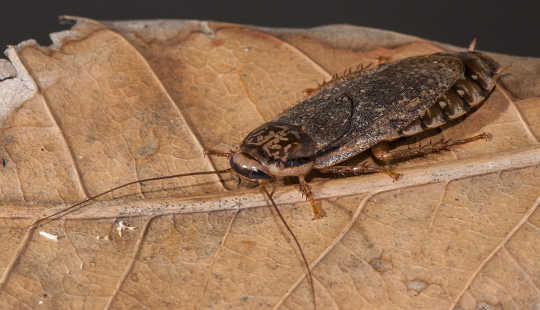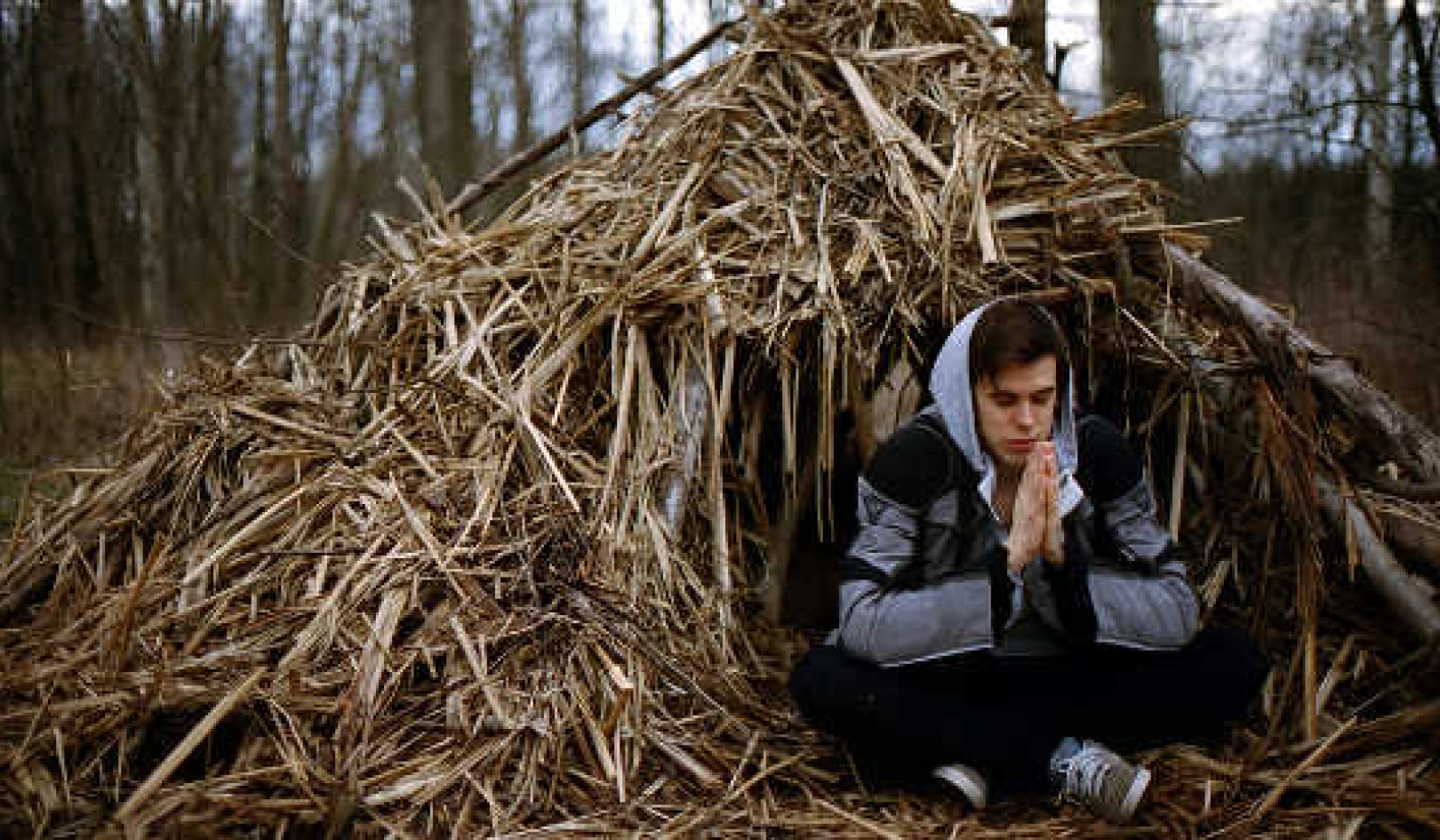 The rather handsome Speckled Cockroach from north-east Africa has spread across the world with human assistance. Anthony O'Toole
The rather handsome Speckled Cockroach from north-east Africa has spread across the world with human assistance. Anthony O'Toole
Cockroaches are a very ancient group of insects. They have been around virtually unchanged in general appearance since the Carboniferous period, more than 300 million years ago.
Technically speaking they are in the Order Blattodea (the same level of classification as, for instance, all butterflies and moths). Cockroaches are very closely related to termites; in fact, some recent work suggests they should be grouped together.
Australia has about 400 species of cockroach, none of which make it to pest status of any note.
But others have made their living inside our homes.
Cockroach 101
Cockroaches are social insects and often live in family groups. They have unusual reproduction: females lay eggs in groups of 4-30 bundled together. It looks like one big egg, but is actually many small eggs encased together in what is called an ootheca. Some species retain their egg(s) and give birth to live nymphs.
Once the egg hatches the cockroach develops through several nymphal stages before moulting to the adult stage. Immediately after moulting a cockroach may appear almost a “ghostly” pale white or cream colour, before its cuticle or exoskeleton develops its characteristic tanned appearance.
Development is relatively rapid: 30-40 days from egg to the adult stage. Adults of some species can live for up to a year and reproduce many times. Thus, from a single colonising egg-bearing female, a large population or infestation can develop in a relatively short time.
Cockroaches feed on a variety of substances that contain cellulose, starch, sugars and associated micro-organisms: from decaying wood to sewage. They can go without food, but not water, for a long time. They tend to hang out in damp or moist places.
In your home
Cockroaches are considered a pest because they can contaminate food and kitchen utensils with their frass (droppings), possibly spreading microbes and causing health problems. Some people may be allergic to cockroaches, or their byproducts, and many people dislike their appearance. Large infestations can result in an unpleasant smell.
There are about 5,000 species of cockroach but only a handful make it to “pest” status, mainly because they make a living in houses.
Two species that are most likely to be found in your home are both are “ring-ins”: the American Cockroach, Periplaneta americana, and the German Cockroach, Blattella germanica.
The German Cockroach is perhaps the most feared due to its high reproductive potential – one female can give rise to more than 10 million individuals in one year (three to four generations) – and the fact that they are believed to mechanically transmit disease. This species has a very broad dietary range.
The American Cockroach is commonly found in sewer systems. Other species that can be found co-habiting with humans are the Brown-banded Cockroach (Supella longipalpa) and the Oriental Cockroach (Blatta orientalis).
If you are seeing cockroaches outside the kitchen area and during the day you have a major problem or at least a significant infestation.
Control is possible, but elimination is not – or, at least, not without poisoning yourself! Strict hygiene is essential. This will greatly help but not eliminate them – pay particular attention to scrap bins, rubbish bins and drains, as well as benchtops and floors.
Electronic insect “repellers” do not work. Pyrethrum surface spray, a natural insecticide, applied along skirting boards can help – cockroaches tend to move along edges.
In cases with severe infestations it is best to contact local control professionals.
The idea that cockroaches are indestructible is simply an artefact of them being difficult to eliminate. They develop resistance to insecticides, as do nearly all insects if targeted. They have remained relatively unchanged for hundreds of millions of years and survived great extinction events.
About The Author
This article originally appeared on The Conversation
Related Book:
at InnerSelf Market and Amazon



 Myron Zalucki, Professor School of Biological Sciences, The University of Queensland. He is an insect ecologist by "bent" and my students and I work on various applied and basic research areas.
Myron Zalucki, Professor School of Biological Sciences, The University of Queensland. He is an insect ecologist by "bent" and my students and I work on various applied and basic research areas.



















